Hearthstone officially celebrated one full decade on the market a week ago. It’s really hard to believe that it’s been that long to me, and for players who started before the game’s official full launch, it’ll be even longer for you! Hearthstone has grown a lot as a game over the course of 10 years with nearly 5000 different cards and a myriad of different game modes added during its run. To celebrate all the fun years that the game has had, I thought it’d be fun to look through all of the old Legendary cards that were part of the original Classic set, which basically functioned as the base set. There’s a lot of history behind these old cards.
This will be a four-part series. In this first part, I’m looking at all of the Class Legendaries in terms of alphabetical order by class. The next three parts will be all the Neutral Legendaries ascending in Cost.
Cenarius
Cenarius is the son of both Malorne and Elune… which probably explains his centaur-esque appearance. If a white stag and a moon elf goddess crossbreed, you don’t know exactly what you’ll get. Best not to think about that too much.
Anyway, the choice of Cenarius as the first Druid Legendary makes sense. This was done presumably because of his lore connections with the base Druid hero, Malfurion Stormrage. It is him who gave Malfurion, Illidan, and Tyrande their druidic training and Malfurion himself became the first mortal Druid on Azeroth. It may not seem obvious to people without much knowledge of the Warcraft universe (like, admittedly, me) but Malfurion and Illidan are both about 15,000 years old so they really have seen their fair share of shit.
In terms of the context of Hearthstone, Cenarius is one of the less impressive class Legendaries from the Classic set. His cost went up from 8 to 9 during Hearthstone’s closed beta implying that he might’ve been pretty good at the time, but Cenarius has never exactly been a force to be reckoned with during his time in the game since official launch. Although his versatility is admirable, his effects were just simply either too slow (in the case of the Treants) or required you to already be building a board (in the case of his buff). On a 9 mana card, it was just simply too hard for him to do enough to make him consistently strong. Even nowadays when he’s back at 8 mana, he still doesn’t see competitive play because the game has evolved too much.
That said, his normal artwork and his Signature artwork are really cool, so he’ll always have that going for him. I will admit that it also does feel badass when he utters his entry voiceline “who dares defile this ancient land?” upon playing him. In his golden animation, he even produces a rainbow out of his hands. Given his significance in the lore of the class, it is somewhat bizarre that he hasn’t received a new card in all of the time the game has been around. He hasn’t been abandoned entirely though, as his first daughter Lunara was introduced in Heroes of the Storm in 2015 and has since been added to World of Warcraft and Hearthstone.
King Krush
King Krush is a dinosaur with not a whole lot of lore behind it. He just simply stalks the Shalozar Basin and doesn’t really do much else. Unlike all of the other class Legendaries, the reasoning behind choosing King Krush to represent Hunter is not particularly obvious. Given that he has no real lore associated with him, it seems odd to have chosen him instead of a Hunter character with more lore or even another, more particular iconic beast within the world of Azeroth.
King Krush was presumably chosen to represent Hunter’s affinity with Beasts, and his design appears to play into Hunter’s generally aggressive gameplan. I presume the intention was that a Hunter would whittle down the opponent’s Health and then King Krush would act as the final big blow. Unfortunately for King Krush, he was not only just too slow for Hunter, but other cards would be able to deal more damage for a lower Cost, meaning that Krush just sat in the sidelines.
However, King Krush’s history is not all doom and gloom. While he spent a long time sitting out, he would later rise to relevance once the game had more and more ways of cheating Beasts out. Big Beast Hunter would become a real deck and King Krush would finally start to see some legitimate play. His Cost is not a huge issue when he can be cheated out with other cards, and when you do, you get an 8/8 body with Charge!
King Krush is an example of just exactly how simple Legendary cards were back in the day compared to what we get now. His text consists of only one keyword (the only other Legendary to share this distinction is Maexxna). In spite of his simple card text, high-statted minions with either Rush or Charge are still not that common in the game today, and even at that, they can’t all go face right away either. His simplicity also means that he can be worked into other parts of Hunter pretty easily, as is the case with Dinotamer Brann, giving King Krush even more spotlight. More recently than that, he was given a new card in plush form: King Plush from Whizbang’s Workshop.
He’s also blue in his card as opposed to green in every other depiction of him. This is because the artwork in his card doesn’t actually depict the proper King Krush character. This isn’t the only time this happens in the Classic set either.
Archmage Antonidas
Archmage Antonidas is one of the most prominent Mage figures in Warcraft lore, and he trained Jaina Proudmoore into being the Mage that she is, so it makes sense why Antonidas would be chosen to be the first Legendary for the class.
Though Antonidas’s relevancy to the meta for the class has ebbed and flowed quite a lot over his years, when Antonidas carried, it carried hard. I’d say the most iconic part of its playability in the game is when its self-looping effect was a cornerstone of Mage with Open the Waygate and four Sorcerer’s Apprentices (copied with Simulacrum or Molten Reflection) to take out your opponent.
His effect is quite simple (as is the case for just about all Legendaries of this era), but I enjoy the design quite a bit. Fireball was an extremely iconic part of Mage’s arsenal back in the day, and the effect allows it to theoretically loop indefinitely by infinitely casting Fireballs. To this day, cards that mention other collectable cards by name are not exactly something you see all the time, so his effect still maintains some level of Legendary-ness in that regard since it also self-triggers.
What Antonidas does have that many of the other class Legendaries don’t is a retrain card in the form of Grand Magus Antonidas from United in Stormwind. While quite a few of the Neutral ones have received new cards, the only other class ones to do so are Edwin and Al’Akir (and technically King Krush if you want to count the plush).
When the Core set was initially launched, Antonidas would be replaced by Aegwynn, the Guardian. Aegwynn is the mother of Medivh who was in the first batch of alternate heroes released for the game (alongside Alleria and Magni).
Tirion Fordring
Tirion Fordring was one of the first Paladins of the Knights of the Silver Hand, alongside the main Paladin hero, Uther Lightbringer. The choice of Tirion makes sense from a lore perspective given his connection to the base hero for the class and the huge amount of story for lore junkies to invest in (Goliath, if you’re reading this, this one's for you!). Despite how important his lore is to the Warcraft universe and how it connects to Hearthstone, the only other Knight of the Silver Hand to find his way into the game is Turalyon… as a professor at Scholomance Academy?
Tirion wielded Ashbringer (yes that same sword that was corrupted) and the flavor is quite simple. Tirion dies, then you pick up his weapon for yourself and continue fighting with it. Unlike all of the other class Legendaries from this set, Tirion is not strictly a “finisher” card though the Ashbringer can potentially put your opponent on a timer with 15 potential face damage. His effect is not particularly “flashy” as the Ashbringer itself has no text. Aside from his lore significance, his status as a Legendary seems to come mostly from his sheer strength as a card and how much value he represents.
And this strength and value contributed to Tirion being an extremely strong card for Paladin. People back then, in the words of Illidan Stormrage, were not prepared to deal with that amount of value from a single card. Your option was to either have a Silence or just deal with the absolutely absurd amount of value that your opponent would get from him. Nowadays as the game has powercrept quite a lot since the Classic days, this isn’t really a big problem anymore, but long-time players will still remember Tirion for the absolute powerhouse he used to be.
Fun fact: Prior to Journey to Un’Goro, Ashbringer was the only Legendary card in the game that wasn’t a minion. It earns this title via a technicality since the card was never collectable, but it had the orange Legendary gem on it. The gem was removed in the same patch that added all of the Kobolds & Catacombs cards to the game.
Prophet Velen
Velen is the leader of the draenei along with Archimonde and Kil’jaeden. Seems like Velen really lucked out in that department. He was also among the first draenei to exist, begging the question, which came first, the draenei or the egg? He’s a prophet and, uh… Screw it, I’m not the lore guy, let’s just jump ahead.
Anduin Wrynn served as a student to Velen, tying his connection to the main Priest hero, but I would say that the choice of Velen to represent the first Priest Legendary is more so out of the character’s power and significant lore than any ties with Anduin himself. Just like Cenarius, Velen is old and he’s seen some shit. His flavor text pretty much describes his lore as best I can.
As a card, Prophet Velen has had a very interesting history. For most of his time in Hearthstone, he was one of the weaker class Legendaries from the Classic set. Perhaps in a game where minions survive longer, his healing bonus would be pretty great, but the biggest appeal of Velen has always been his damage bonus, effectively making him a Priest-centric version of Malygos. He always had potential to be extremely powerful if Priest were given access to the right tools, but without those tools, there’s not much you can really do with him.
And then in Knights of the Frozen Throne, those “right tools” had finally hit the spot in the form of Shadowreaper Anduin. Combine that with Raza the Chained and Prophet Velen would give you a 4-damage minigun that costs nothing to use. You just need to be able to play some cheap cards to refresh the Hero Power and bam-bam-bam!!!
When Ashes of Outlands hit the game, he was rotated out and replaced by Natalie Seline, whom if you didn’t know was a Warcraft character, you’d assume that’s probably just your neighbor’s teenage daughter. Prophet Velen in their eyes didn’t seem to fit what the Hearthstone team wanted Priest to be anymore.
As for the effect of Velen, his effect in Alpha appeared to be “Battlecry: Draw a card for each undamaged character” functioning as a reverse Battle Rage, although this version also counts enemies. I’m really glad this was changed because the effect he received later is a hell of a lot better. Despite its simplicity, cards that give multiplicative bonuses are still not super common (the vast majority of them are either Epic or Legendary). He still appears quite Legendary-worthy to me.
Edwin VanCleef
Edwin VanCleef is definitely one of the most iconic class Legendaries from the Classic set. He’s not a pirate in spite of his appearance and what looks like a skull mast in the background. Instead, Edwin is the founder of the Defias Brotherhood which is basically just a gang of misfits. I realize I probably offended every Warcraft lore nerd ever by saying that, but you get what you came here for.
In deep contrast with all of the other class Legendaries in the set which cost 7 or more, Edwin is a very low-Cost Legendary, back when those were still quite rare. Rogue in general has always had an affinity for spamming low-Cost cards, so it makes sense that their first Legendary would play into this gameplan. Edwin is a major force to be reckoned with since he can come down very early with really huge stats. During the beta, he even had Stealth too. I guess we should just be thankful that most of us never had the misfortune of dealing with a Stealthed Edwin.
For many years, people always thought Edwin would be getting nerfed or rotated out, but he managed to evade the hammer every single time. He would finally be nerfed to 4 mana in January of 2021, but would be buffed back to 3 only two months later when he rotated out of Core. And just like in Warcraft, he would be succeeded by his daughter, Vanessa VanCleef. He’s also the second of three class Legendaries from this set to get another card, Edwin, Defias Kingpin. In typical Edwin fashion, of course he found a home.
Al'Akir, the Windlord
Long ago, the four elements lived together in harmony. Then, everything changed when the Firelord attacked.
Al’Akir is the elemental lord of air. He is the weakest of the four Elemental lords, both in Warcraft and in Hearthstone since his stats are only 3/5 as opposed to 7/5 (Therazane), 7/7 (both Neptulons), or 8/8 (both Ragnaroses - or Ragnari?), and he was bumped up to 3/6 when he moved to the Legacy set in 2021.
Given that Ragnaros is one of the most iconic characters in Warcraft history, it makes sense that they would want him to be Neutral instead of making him a Shaman Legendary. This left one of the other three Elemental lords to be a natural choice for Shaman. Although Elementals wouldn’t be made an official minion type until Journey to Un’Goro, Team 5 most likely wanted to represent an affinity for elementals in Shaman.
Al’Akir is the first “keyword soup” minion of the game possessing four keywords and no other text. If you were a brand new player back in 2015 or so, watching this card come down for the first time probably felt a little bit intimidating because of how much it could do. In terms of its raw value of stats and keywords to mana cost, it’s never been particularly impressive, but Al’Akir has historically been usable in combination with two Rockbiter Weapons to deal 18 damage for 10 mana.
While you ideally would want to use this to finish the game, in theory, it would also leave behind a 3/5 with Taunt and Divine Shield if it didn't, which could potentially soak up quite a bit of damage. Brass Elemental makes Al’Akir look kinda bad, and well, to be fair, it is and has been for a long time. But does Brass Elemental have Charge? Thought so.
While you probably wouldn’t expect this, Al’Akir has received more additional spotlight in card form compared to the other class Legendaries of the Classic set. It was specifically summonable with Windshear Stormcaller via a condition that you would never realistically hope to achieve (at the time anyway, Totally Totems makes it a piece of cake now). More recently, it was given a new hero card in the Caverns of Time set, Al'Akir, the Winds of Time, which fittingly draws minions with all of the keywords of the original minion.
Lord Jaraxxus
Lord Jaraxxus is definitely one of the most iconic Legendaries from the Classic set. His choice to be the first Legendary is somewhat strange as unlike all of the other class Legendaries barring King Krush, Jaraxxus doesn’t seem to have much significant lore other than his encounter in the Argent Tournament in which he kills Wilfred Fizzlebang who accidentally summons him. His effect does somewhat mirror what happened to Fizzlebang in the tournament in which you summon a Demon outside of your control and he “takes over” so to speak. He does also have at least some connection to Gul'dan via the Tomb of Sargeras. In turn, the card's anti-synergy with Fizzlebang is cute.
The choice of a Demon to be a Legendary was most likely done to emphasize Warlock’s affinity for the minion type. And when I say affinity, I mean that it had absolutely nothing else. Summoning Portal was the only non-Demon Warlock minion in the game until GvG came out. Although that is to say that calling him a “minion” is a bit of a stretch since he could only exist as a minion if he were cheated out or randomly summoned. If you played him properly, you didn’t get a body on the board.
Speaking of his effect… he’s basically a hero card before hero cards existed. So much so to the point where he was remade into a hero card when he was moved to the Legacy set in 2021. To this day, he remains the only card in the game to change card type entirely (and before someone tries to be cheeky and say Felsteel Executioner… don’t.). Unlike basically every other Legendary card from this era, Jaraxxus has still maintained his Legendary spectacle over the years and still feels like the card would be a Legendary if it were printed today. That’s pretty amazing for a card that is 10 years old. Until Warlocks get a proper weapon, Jaraxxus also remains the only Warlock card in the game that conventionally allows your hero to attack.
Even though Jaraxxus has been outclassed by the passage of time, people who have played the game for a long time won’t be able to deny just exactly how cool it was to see Jaraxxus hit the field when you play it, or how intimidating it might’ve been when your opponent played it. Some people may also remember the interaction with Sacrificial Pact, which was funny, but ultimately it deserved to be patched out.
Another cool fact: Tied with Mosh'Ogg Enforcer, both it and Jaraxxus’s pre-2021 card have the largest gap between Attack and Health of any minion in the game with 12… that you can put into a Constructed deck anyway.
Grommash Hellscream
Grommash is the father of the base Warrior hero Garrosh Hellscream, who apparently really wanted to give his child a similar name to himself. And when your last name is Hellscream, it’s hard to imagine that you have a bright future ahead of you. Grommash also drank the blood of Mannoroth, an annihilan (think Magtheridon or Pit Commander, and that’s basically what they are) which resulted is his skin turning green, his eyes turning red, and getting a ravaging bloodlust. To be fair, Grommash seemed to luck out big time if his only reaction to drinking demon blood is turning his skin green and flaring up his temper. I probably wouldn’t be so lucky if I did the same thing.
What of the card itself though? The choice of Grommash as a Legendary is pretty obvious since he’s the father of the hero himself. Grommash is basically a King Krush for Warrior as a large Charge minion, and in fitting with Warrior’s style, takes advantage of being self-damaged and giving him +6 Attack which is the largest Enrage Attack bonus in the game (though Raging Worgen can potentially have a larger overall bonus damage output because of his Windfury).
To my knowledge, he doesn’t see play anymore and hasn’t for quite some time now, but Grom used to be ran pretty regularly in some archetypes to act as a surprise lethal finisher. People who’ve played the game for a really long time will probably remember watching Grom hit the board and out of nowhere deal 10 or 12 damage, be that by you or your opponent. They might also remember how Control Warrior used to run like 15 Legendaries, and Grom was a staple in the deck.
That's it for part 1 of this four-part series. In the next part, I'll be taking a look at the first batch of Neutrals. Do you have any good memories with these cards and did you enjoy this trip down nostalgia lane? Let us know down in the comments.
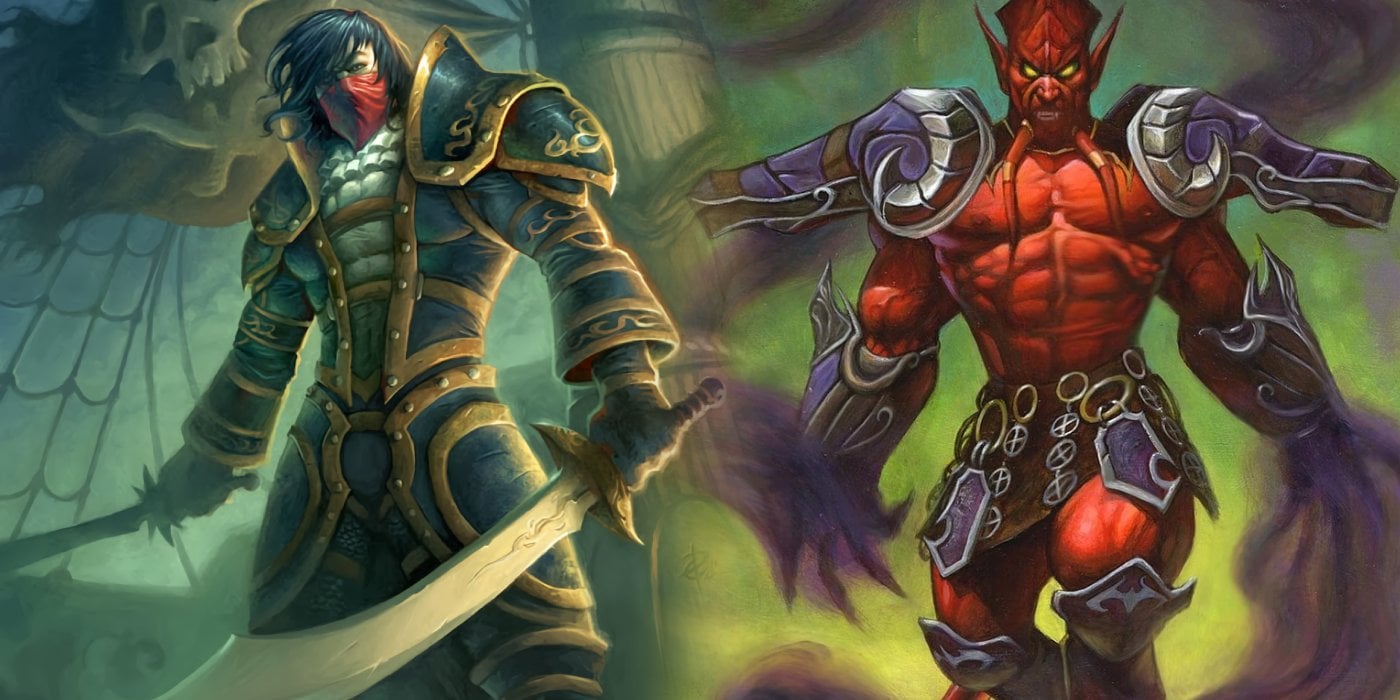
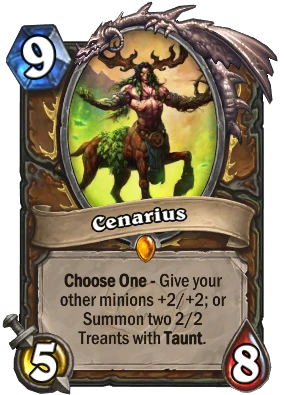
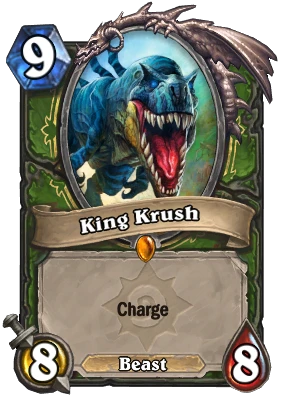
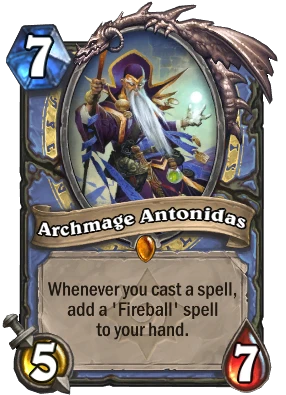
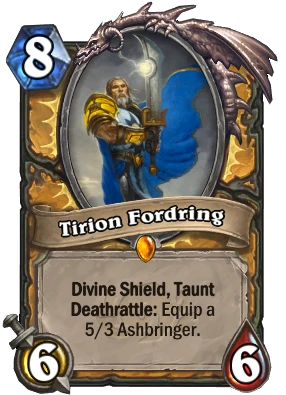

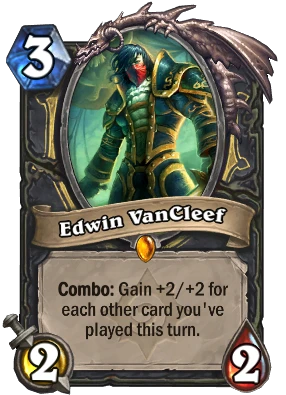
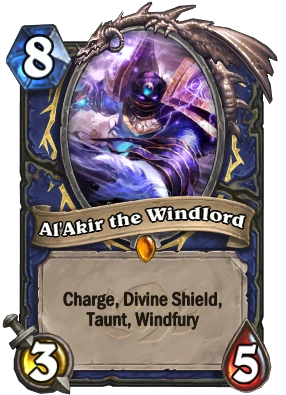
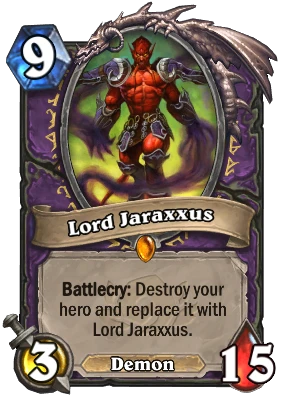
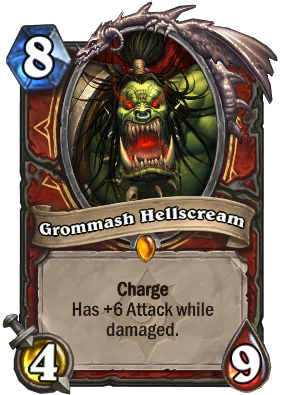
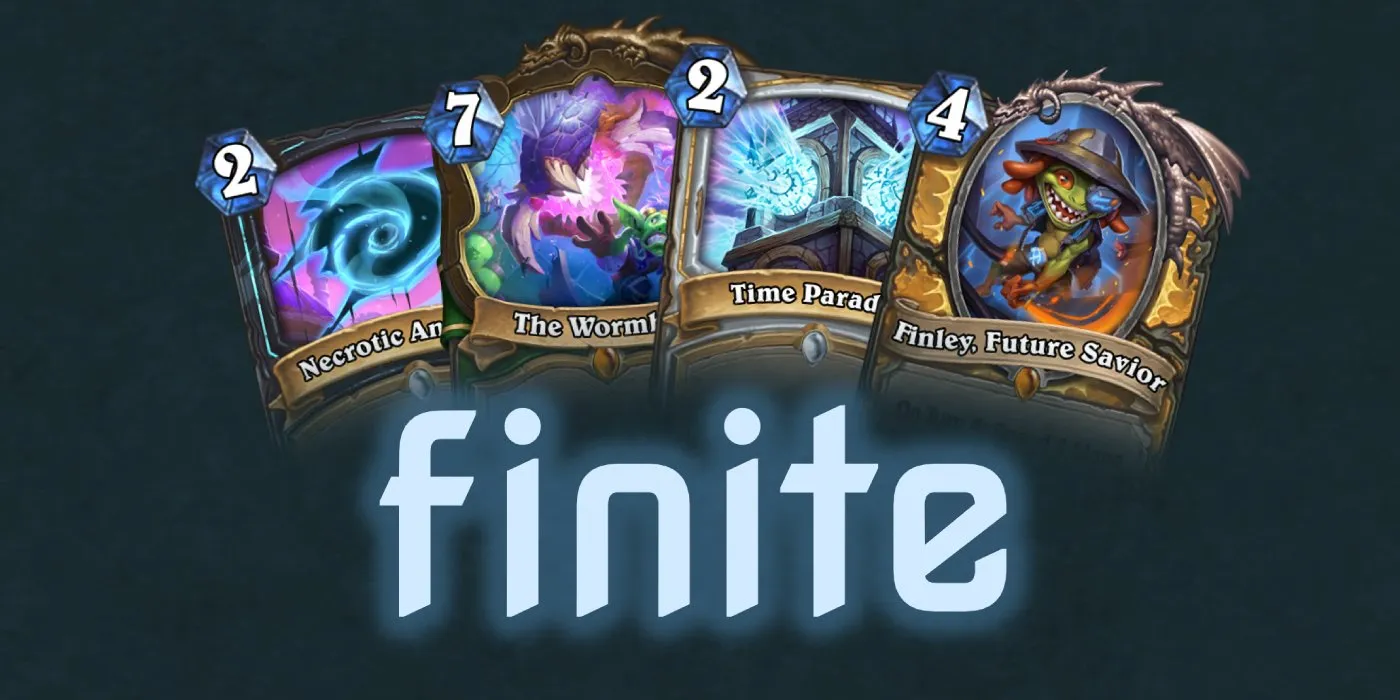
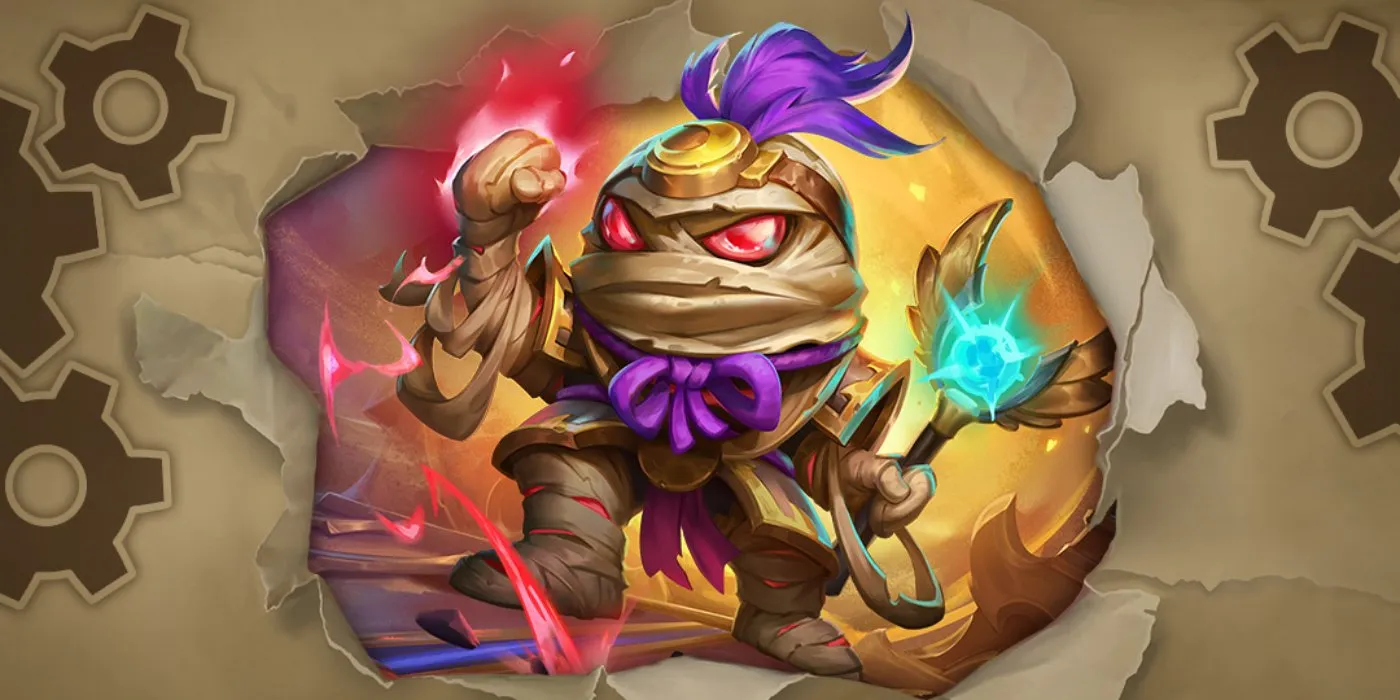
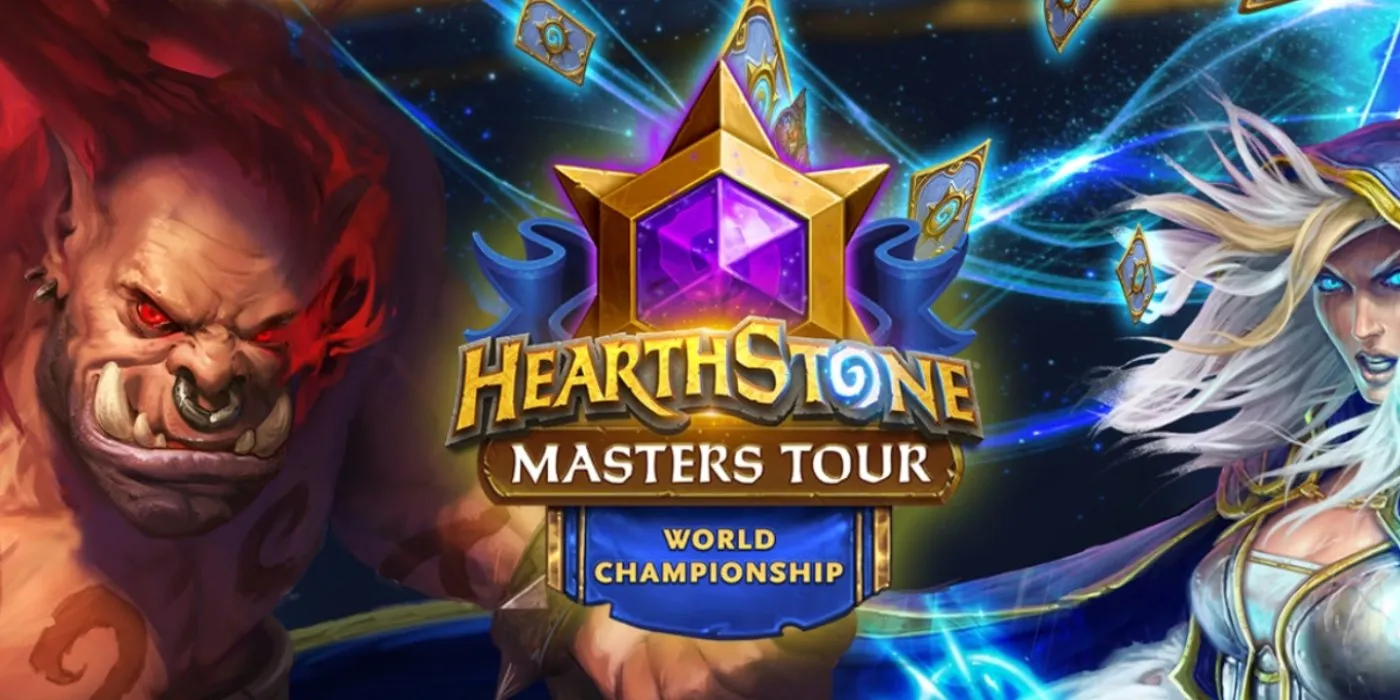
Comments
YOU FACE JARAXXUSS!
I still remember the first time I saw that card in action back then... My jaw just hitted the ground the second it happenned.
Also Being 16-7 years old at the time, I can say that was one of the coolest stuff I had ever seen.
Thanks for the article, it was really nostalgic.
you got new Tirion instead of old one, he used to be 6/6
And I also have new Al'Akir instead of the old one, he used to be a 3/5.
Though I guess for the sake of context, it would make the most sense to use the old versions like with Jaraxxus.